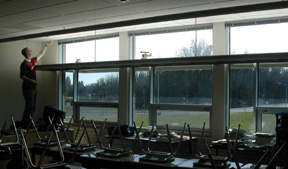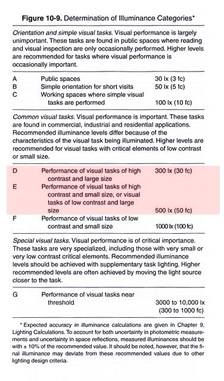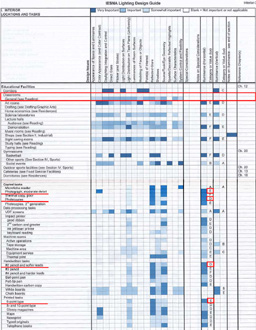



Standards:
- Illuminance levels
- Daylighting integration
- Glare
- Luminance of room surfaces
- Uniformity of light distribution

The 9th edition IES standards specify nine task categories, ranging in terms of difficulty and importance from A, least exacting, to I, most exacting. [Fig.1 IES Handbook 9th edition p.10-13] Each category corresponds to a range of recommended illuminance values that are modified by factors such as users’ age.
Along with this table the IES handbook provides an extensive list of tasks with their category A through I as well as the relative importance of lighting design issues such as glare, color rendering, and aesthetic appeal. [Fig.2 IES Handbook 9th edition p.Interior 3-10]
The standards list a variety of situation that occur in a school setting. For classrooms the table gives the importance of design issues but for actual illuminance levels refers to the section on reading tasks, reading being the most exacting visual task that occurs in most classrooms. Important design issues include daylighting integration, glare, luminance of room surfaces, and uniformity of light distribution. These criteria may discount tasks such as art projects that occur in classrooms for lower grade levels but are relegated to a separate art rooms at the junior high and high school level.
Reading tasks are subdivided in the table into various situations characterized varying degrees of contrast, size of characters, and accuracy of reproduction. Tasks most relevant for the K through 6 classroom include writing with a No. 2 pencil (category D), reading photocopies (D), recognizing keys on a keyboard (D), and examining photographs in textbooks (E). Tasks such as viewing photographs raise the importance of color rendering from “somewhat important” to “very important.” Category D tasks have a base recommended horizontal illuminance of 30fc (300 lx) and category E tasks have an illuminance of 50fc (500 lx). Thus the IES standards call for an illuminance of 30 to 50 fc for a typical classroom.







